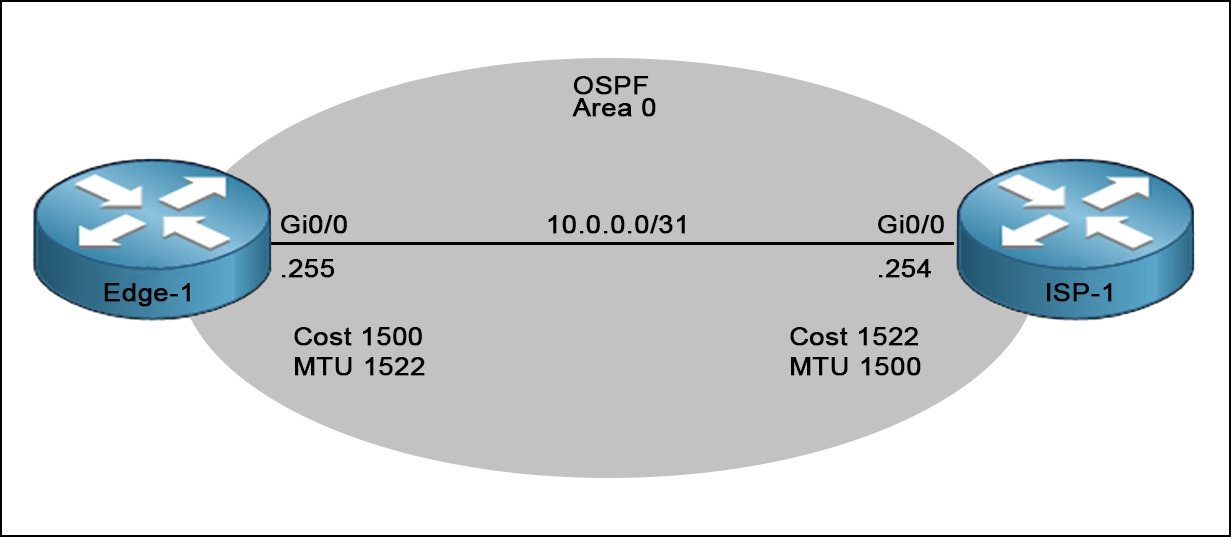Which statement about QoS default behavior is true?
By default, all ports are untrusted when QoS is enabled. This means that any traffic received on these ports will not be trusted and will be subjected to the switch's QoS policies for classification and marking. This default behavior is intended to prevent any incoming traffic from being treated with higher priority or different QoS treatment without proper classification and assignment.
Refer to the exhibit.

Router edge-1 is unable to establish OSPF neighbor adjacency with router ISP-1. Which two configuration changes can you make on edge-1 to allow the two routers to establish adjacency? (Choose two.)
Edge-1 is unable to establish OSPF neighbor adjacency with ISP-1 due to an MTU mismatch. To resolve this, reduce the MTU on edge-1 to 1500 to match ISP-1's MTU. Additionally, you can configure the ip ospf mtu-ignore command on the edge-1 Gi0/0 interface to allow OSPF to establish adjacency despite the MTU mismatch.
Which statement about named ACLs is true?
Named ACLs (Access Control Lists) in networking are used to identify ACLs with a specific name rather than a number, making them easier to manage. They support both standard and extended ACLs, allowing for more flexibility and detailed traffic filtering.
Which identification number is valid for an extended ACL?
An extended ACL (Access Control List) uses identification numbers in the range of 100-199 and 2000-2699. The valid identification number for an extended ACL based on these ranges is 100.
While you were troubleshooting a connection issue, a ping from one VLAN to another VLAN on the same switch failed. Which command verifies that IP routing is enabled on interfaces and the local VLANs are up?
The command 'show ip interface brief' provides a summary of the IP addresses assigned to interfaces and their current status (up or down). This command is useful for verifying if IP routing is enabled on interfaces and if the local VLAN interfaces are up.